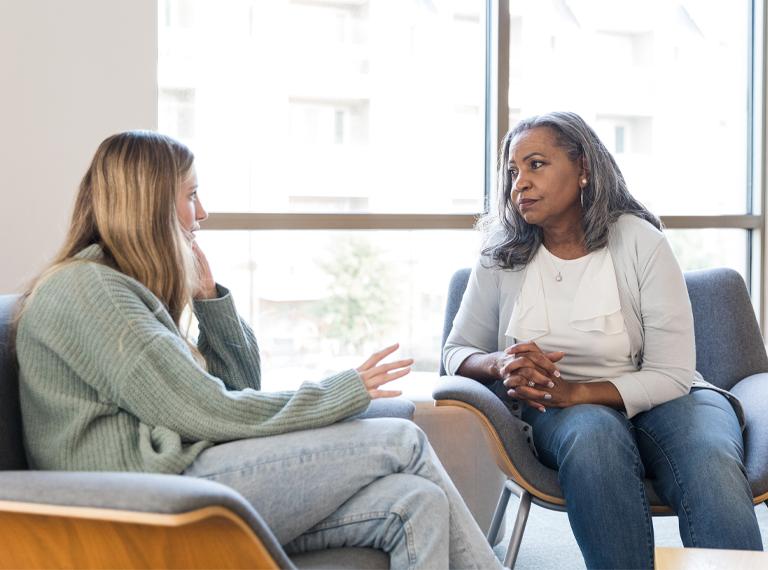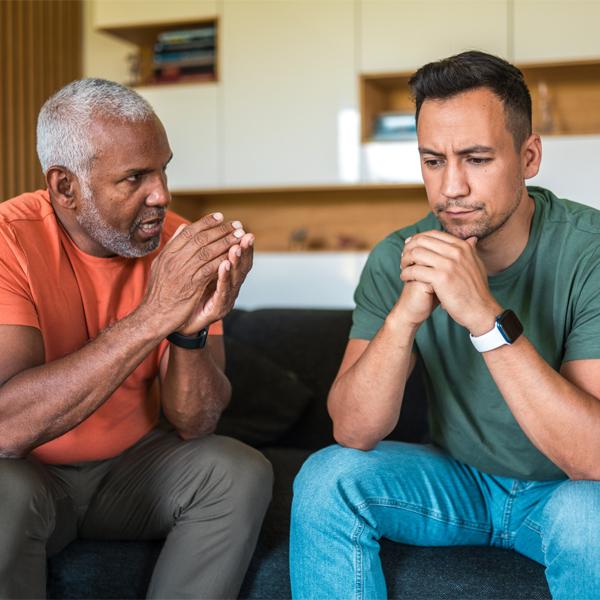We recently partnered with independent mental health charity SANE to better understand how employees experience mental health in the workplace.
As part of this collaboration, we conducted a survey of 2,000 employees - and the results were alarming. We found that 85% of UK employees have experienced symptoms of burnout due to work. This statistic highlights the need for proactive mental health support in the workplace – something that has never been more urgent. As Sarah McIntosh, CEO of Mental Health First Aid (MHFA) England, explained during our recent webinar, mental health is no longer a side conversation – it’s central to how we work, lead, and thrive.
Mental health first aid offers a practical, people-first solution. But as Sarah emphasised, it’s not just about training individuals. It’s about embedding mental health into the fabric of your organisation and building a community that supports everyone.
Here’s how Sarah suggests organisations can move from awareness to action.

What is mental health first aid?
Mental health first aid is a globally recognised training programme that equips people with the knowledge and skills to support others experiencing mental health challenges. It was first developed in Australia by Betty Kitchener and Tony Jorm, who asked whether the principles of physical first aid be applied to mental health.
Working alongside clinicians, educators, and individuals with lived experience, they created an evidence-based training model that has now reached over 8 million people across more than 30 countries.
In England, MHFA England is the only licensed provider of this training. The organisation offers courses and consultancy services to help employers build a network of trained mental health first aiders within their businesses. These first aiders play a vital role in promoting wellbeing and creating a culture of openness around mental health.
So, what do mental health first aiders actually do?
They’re not clinicians, and they don’t diagnose conditions or replace professional care. Instead, they act as a first point of contact – someone who can spot the early signs of poor mental health, start a supportive conversation, and guide colleagues towards appropriate help. That might include self-help resources, professional services, or crisis support.
As Sarah explained during the webinar: “Mental health first aiders are there to listen, empathise, and help people access the support they need.”
Research from The University of Sydney shows that MHFA training improves mental health literacy, boosts confidence in supporting others, and encourages help-seeking behaviour. It also helps reduce stigma and contributes to a healthier, more inclusive workplace culture.
Building a mental health first aid strategy that works
According to Sarah, one of the most common mistakes organisations make is treating mental health first aid as a standalone initiative. “If you don’t have a wider workplace mental health strategy, you shouldn’t start with a mental health first aid network,” she said. “It needs to be part of a whole-organisation approach.”
She recommends laying the groundwork with four key elements:
Visible leadership support: senior leaders should champion mental health, not just in words but through action. Ideally, they should complete the training themselves and speak openly about their own experiences.
A clear mental health policy: organisations need to define their commitment to mental health, how it aligns with business goals, and what support systems are in place.
Defined roles and responsibilities: it’s important to clarify what mental health first aiders are (and aren’t) responsible for. Their role should complement, not replace, HR, line managers, and external providers.
Robust policies and procedures: Sarah stressed the importance of having clear guidelines around confidentiality, safeguarding, crisis support, and how employees can access the network.
Selecting the right people
When it comes to choosing mental health first aiders, Sarah believes representation is key. “Your network should reflect your workforce,” she said. That means considering diversity across departments, locations, shift patterns, and seniority levels.
She also emphasised that participation should be voluntary. “People need to be able to opt in and out at any time,” she explained. “Life changes, and we need to respect that.”
As a general rule, Sarah recommends one mental health first aider for every 25 employees. But she noted that this should be adjusted based on the size, structure, and stress levels of your organisation.
Supporting your network
Training is just the beginning. To keep your mental health first aiders engaged and effective, Sarah recommends building a strong support system around them.
This includes:
Regular check-ins: these can be one-to-one or group sessions, giving first aiders a chance to share experiences, raise concerns, and access support.
Peer learning: Sarah encourages organisations to treat their network like any other employee resource group. “Get them together regularly,” she said. “They’re a great source of insight and ideas.”
Visibility: it’s not enough to have a network – you need to make sure people know who they are and how to reach them. Sarah suggests sharing short bios that highlight each first aider’s background, lived experience, and areas of interest. “It helps people find someone they can relate to,” she said.
Resources: MHFA England provides access to the Hub of Hope, a national directory of local and national support services. Sarah also recommends building a library of internal resources that grows over time based on the themes and needs that emerge during conversations.
Making it sustainable
A key consideration for many HR and business leaders is the perceived time and financial commitment involved in building a mental health first aid network. According to Sarah, it’s quicker and cheaper than you think.
The initial training takes two days, and ongoing coordination typically requires just a few hours a month. “If you get the setup right, the network often becomes self-sustaining,” she said. “First aiders take the lead, support each other, and help shape the programme.”
She also pointed out that mental health first aid can work just as well in remote or hybrid environments. “You might need to get creative – use email, WhatsApp, or virtual check-ins – but the principles are the same,” Sarah explained.
The role of leadership
Leadership, Sarah believes, is the game-changer. “The best organisations have senior leaders who champion mental health. Some even do the training themselves, which sends a powerful message.”
But even if leaders aren’t ready to share personal stories, they can still make an impact by linking mental health to business outcomes – like performance, retention, and customer experience.
And if you can’t get buy-in from the top right away? Sarah suggests starting where you can. “Find the most senior person who’s able to get involved straight away – even if it’s a line manager. Build from there.”
Addressing common challenges
Sarah acknowledged that some employees may be hesitant to approach a mental health first aider. Stigma, confidentiality concerns, and lack of trust can all be barriers.
To overcome this, she recommends:
Normalising the conversation
Share stories, videos, and research to make mental health part of everyday dialogue. “The more we talk about it, the more we reduce stigma,” Sarah said.
Clarifying confidentiality
Make it clear that conversations are private unless there’s an immediate risk of harm.
Building trust through visibility
Help employees get to know their first aiders as people. “If someone’s going through bereavement, they might want to speak to someone who’s been through something similar,” she explained. “It’s about making those human connections.”
Measuring impact
When it comes to measuring the success of your mental health first aid network, Sarah encourages a mix of qualitative and quantitative approaches.
She suggests starting with employee engagement surveys to assess perceptions of mental health support, leadership effectiveness, and overall wellbeing. Operational metrics like absenteeism, retention, and usage of support services can also provide valuable insights.
But Sarah also recommends going deeper. “Ask your first aiders what they’re hearing,” she said. “What themes are emerging? What resources are missing? What’s working and what’s not?”
Some organisations even collect anonymous feedback from employees who’ve accessed support, helping them understand the personal impact of the network and identify areas for improvement.
Keeping the momentum going
Sustaining a mental health first aid network requires more than good intentions. It takes planning, communication, and a commitment to continuous learning.
Sarah encourages organisations to involve their first aiders in shaping the programme. “They’re on the ground, having the conversations,” she said. “They know what’s needed.”
She also recommends tapping into national awareness campaigns – like Mental Health Awareness Week or World Suicide Prevention Day – to keep the conversation going. “Get your first aiders involved in planning events, sharing stories, or running workshops,” she suggested. “It’s a great way to keep the network visible and engaged.”
And if you’re not sure where to start? Sarah’s advice is simple: reach out. MHFA England offers a range of resources, including implementation guides, case studies, and free webinars. Their team and their network of instructors are always happy to help.
Whether you’re just starting out or looking to strengthen your existing network, the message is the same: start small, think big, and keep going. With the right support, even a handful of trained individuals can create ripples of change that transform your workplace for the better.
If you missed our webinar with Sarah or want to revisit the discussion, you can watch the full recording here.




